Indian Institute of Technology Kharagpur (IIT-K) 2010 B.Tech Electrical Engineering Signals & Networks - Question Paper
INDIAN INSTITUTE OF TECHNOLOGY
Department of Electrical Engineering
End semester exam
Date:22,November 2010 Time:3 hours Full Marks: 100 No. of students:206
Name: Signals& Networks Sub.No:EE21101
ans any five questions
INDIAN INSTITUTE OF TECHNOLOGY Department of Electrical Engineering END AUTUMN SEMESTER EXAMINATION-2010
Date: 22.11.10 Time; 3 hours Full Marks; 100 No. of Students: 206
Sub. Name: Signals & Networks Sub. No. EE21101
Instructions: Answer any five questions.
1. (a) State Tellegens theorem. (2)
(b) Obtain the Nortons equivalent at terminals a and b for the network shown in Fig. Ql(b).
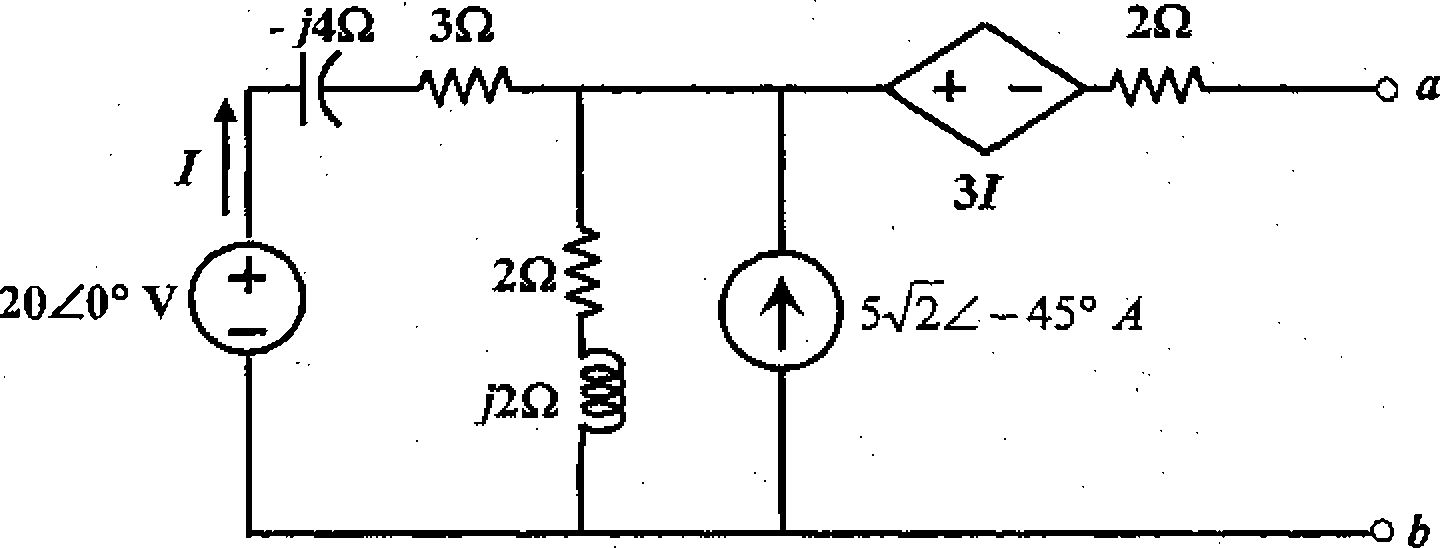
Fig. Ql(b)
(c) Prove that a network having n nodes and b branches can have exactly (b-ri) number of linearly independent loop equations. (6)
(d) Express transmission parameters (Aa, Ba, Ca, Da) of a 2-port network (network A) in terms of its admittance parameters (yna, yt2a, yua, ynz)- Now another 2-port network (network B) with admittance parameters (ynb> ym> y2it y22b) is connected in cascade with network A. Find out the expressions of admittance parameters of the composite network in terms of the individual admittance parameters. (2+4)
2. (a) Design a Sallen-Key low-pass filter having the parameters; fc = 3.2kHz, Q -1.0 and dc gain = 4dB. (4)
(b) Draw the oriented graph of the network shown in Fig. Q2(b). Find the fundamental tie-set matrix and the loop impedance matrix. Write the network equilibrium equation. (1+2+2+1)
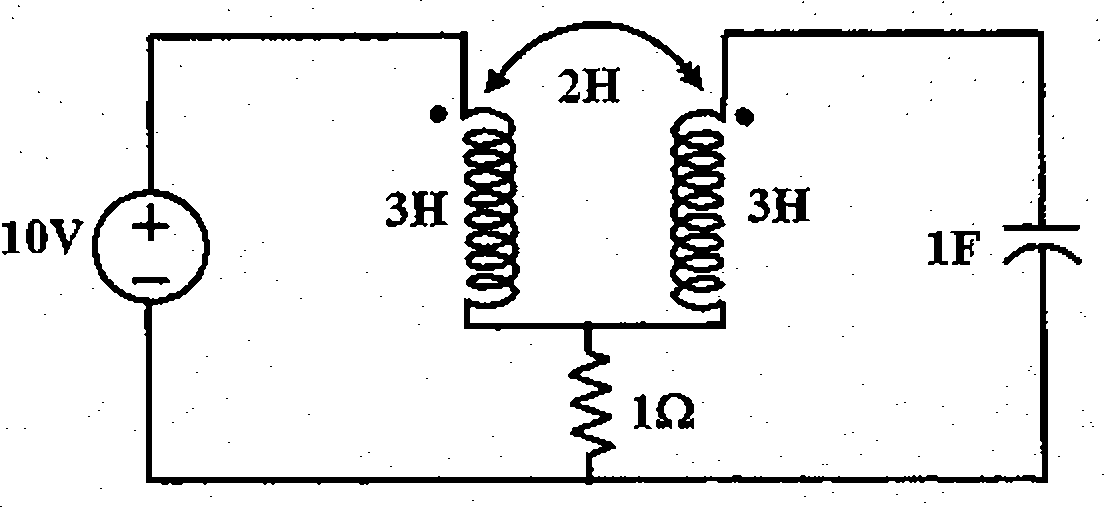 |
|
Fig. Q2(b) |
2, (c) In the circuit shown in Fig. Q2(c), the switch K is closed on position 1 from time t - -qo and then moved to position 2 at time t = 0 to supply the series R-C circuit with a voltage source, v(t). The voltage of the source is a periodic rectified sinusoid (the waveform is shown in the associated figure) having peak value of 10V. Find the initial charge on the capacitor (at t - 0-) and the expression for the voltage across the capacitor, vc(t) after the switch is moved to position
2. Also plot the waveform of vc(t) under steady-state condition (for t > co ), (1+7+2)
Waveform of Supply Voltage, v(t)
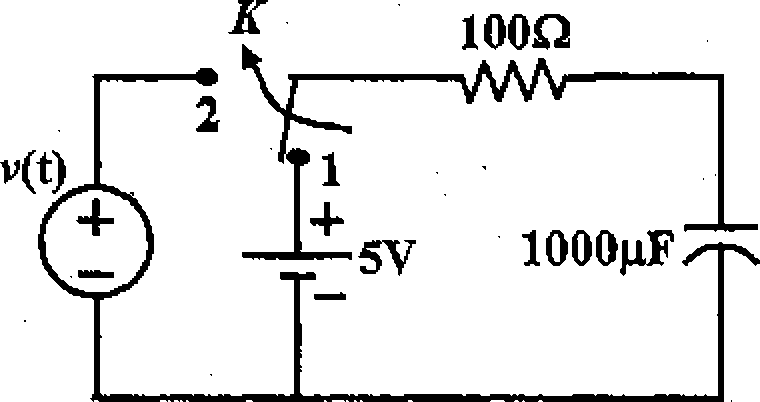
|
3 | 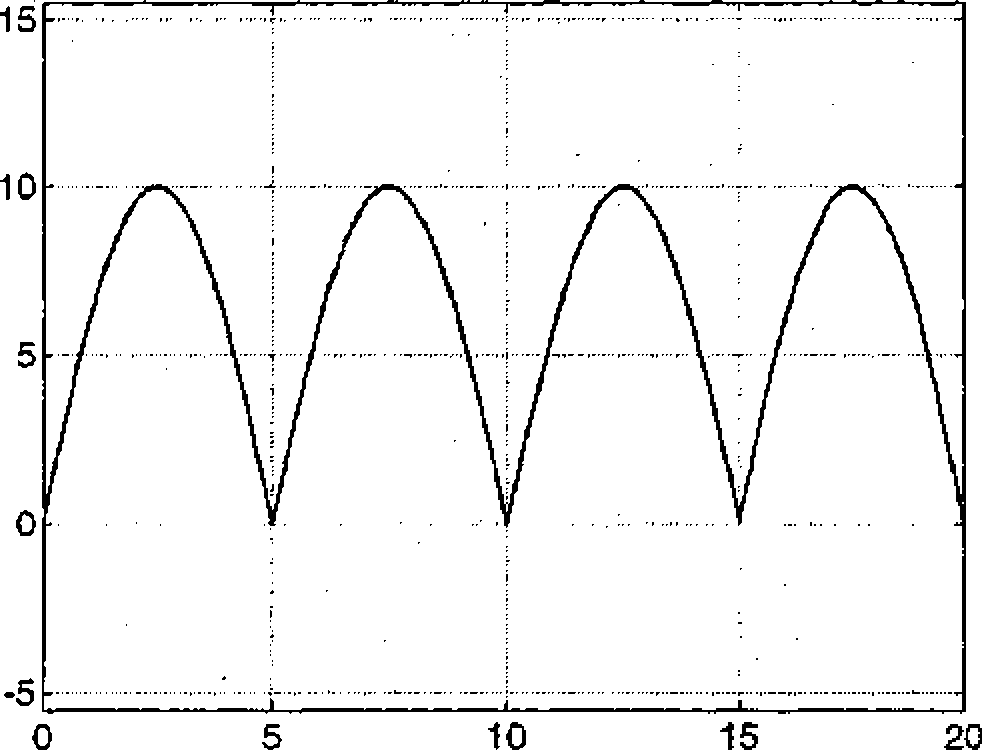 |
|
Time(ms) | |
Fig. Q2(c)
3. (a) In the circuit shown in Fig. Q3(a), the switch K is closed at time
f, where 0 = 30 . The nature of the switch K is such that it opens automatically
180
when the current flowing through it becomes zero. Find out the time instant t2 when the switch will open and the corresponding instantaneous value of voltage across the switch (Fab). (7+1)
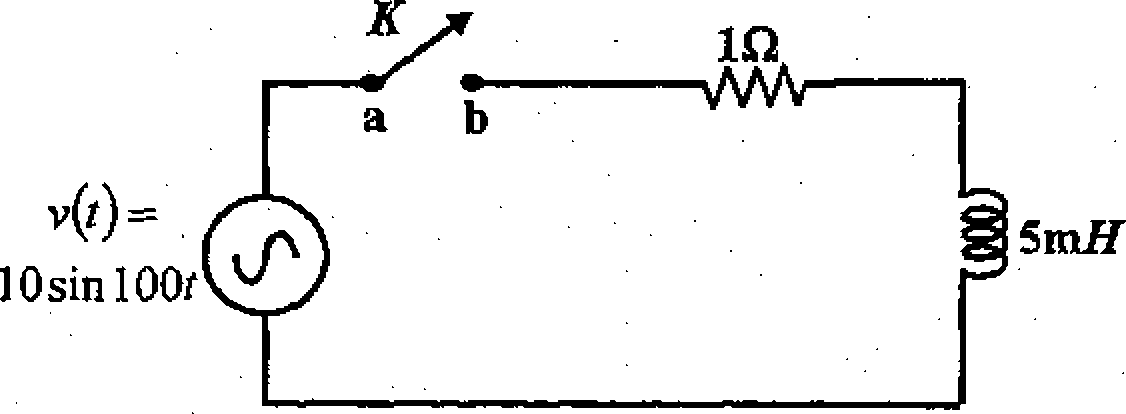
Fig.Q3(a)
3. (b) The incidence matrix of a network is given below. Using this matrix, (i) draw the oriented graph Mid write the complete incidence matrix A, (ii) considering branches 2, 3, 4 to constitute twigs of a tree, find the sub matrices A, and Ai, (iii) find the fundamental cut-set matrix and the fundamental tie-set matrix using the values of At and A/. (2+2+4)
1 0 0-1 0 1 -io i o i o 0 1 -1 0 0 0
A =
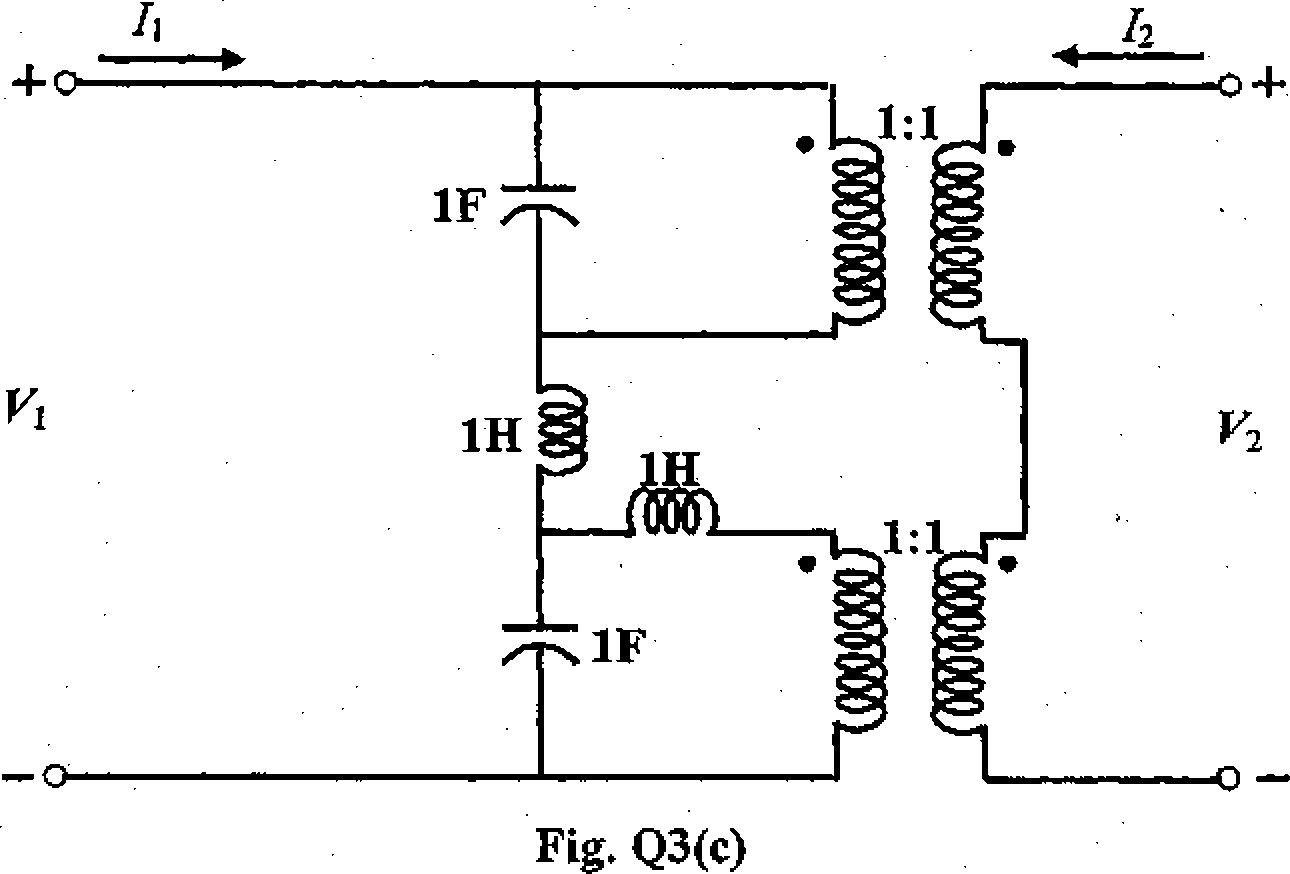
4. (a) Determine the -parameters of the network shown in Fig. Q4(a). Comment on the reciprocity and symmetry of the network. (4+1)
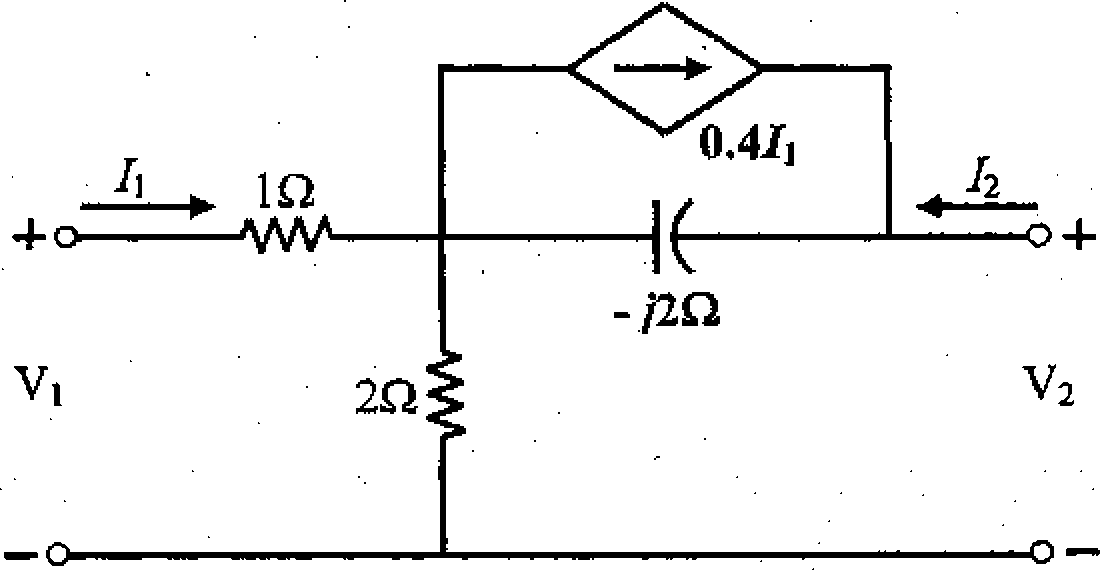
Fig.Q4(a)
(b) A filter is composed of a T-section. The inductance in each series arm is 16mH, while the shunt arm consists of a capacitance of 90nF in series with an inductance of 24mH. Calculate the cut-off frequency and the frequency of infinite attenuation of this filter. Also find the value of impedance at which the filter should be terminated. (2+2+1)
(c) A series R,L,C circuit is excited by a dc voltage u{t). When do you say it is underdamped? Obtain the voltage across the capacitor for a typical under-damped situation. (2+8)
5. (a) Obtain the Fourier Transforms of (i) an unit impulse, and (ii) coso0/. (4)
(b) Obtain the Fourier Transform of the impulse response of a system governed by the differential equation y(n) + any(,!~]) +aM_2y("_2) +l- a0y = bnix(a) + bw_]x(*'~') + I- b0x where x - x(r) is the input to and y y(f) is the output of the system, and x{k) =d*xt dtk. (4)
(c) Obtain the response of the system in (b) for (0 = cos coct. (4)
(d) What is meant by frequency response of a system? Obtain the same for a stable 2nd order (n = 2) system of the form of (b) with or, = 2<v, b0 = a0 - a>*, bx = b2 = 0. (8)
6. (a) Define Laplace Transform (LT) of a signal jc(i) along with Region of Convergence (ROC). Obtain the same for x(t) = e'uit) + e~5' (sin 5t)u{t). (2+5)
(b) The LT of the unit step response of a system is ~ /s(s + _ 2) tan ts transfer
function H(s) and hence the possible impulse responses h{t). (5)
(c) What is the condition for BIBO stability of a system? How can the same ascertained from the LT of a system? Is any of the responses obtained in (b) stable? (3)
(d) The unilateral LT for a x{t) is +2s + 3)/ . Find the initial and the final
w /( + 1)(2 +s + V)
values of x(t). Prove any one of these results. (2+3)
|
Attachment: |
| Earning: Approval pending. |
